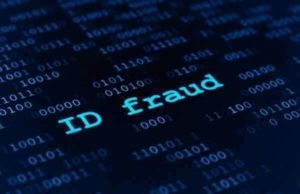
REAL ID ACT TEXT
What is the Real ID Act?
The Real ID Act 2009 was an Act of the United States’ Congress that modified federal laws pertaining to authentication, security and the issuance procedures surrounding standards for state driver’s licenses, identification cards, and various immigration issues that solely pertained to suspected acts of terrorism.
The laws established by the Real ID Act established a series of requirements for the obtainment of state driver’s licenses and identification cards. These regulations also revolved around restrictions on how identification cards were to be accepted by the federal government for investigation purposes as defined by the Secretary of Homeland Security. The Secretary of Homeland Security–the individual in charge of defining the official purposes for which identification is needed as it pertains to driver’s license and other forms of identification—mandates that individuals show identification when boarding commercially operated flights and upon entering nuclear power plants and federal buildings. When you realize your identity has been stolen contact an identity-theft lawyer to acquire legal advice and assistance.
The REAL ID Act 2009 was authored by Representative James Sensenbrenner of Wisconsin; the bill passed through the house but immediately went stagnant upon reaching the Senate. The bill was attached as a rider on a military spending bill; in March of 2007 the enforcement of the REAL ID Act was officially postponed for two years.
In January of 2008, the United States Department of Homeland Security issued a final decision to establish the minimum standards regarding the issuance of a state’s driver’s license and identification card—these minimum standards were established in conjunction with the REAL ID Act. These regulations created standards for individual states to meet the requirements of the REAL ID Act, including the following:
o Proof of identity
o Lawful status of the applicant
o Information and security features that are to be incorporated into each identification card
o A list of security standards for the offices that are responsible for issuing driver’s licenses and identification cards
What does the Real ID Act Implement?
The REAL ID Act implements the following procedures and regulations:
o Title II of the REAL ID Act establishes federal standards for state-issued driver’s licenses and other forms of non-driver identification cards
o The REAL ID Act alters visa limits for nurses, Australian citizens and temporary workers
o The REAL ID Act introduces regulations to cover “delivery bonds”, which are similar to bail bonds but for non-American citizens.
o The REAL ID Act funds several pilot projects and reports that are explicitly related to border security
o The REAL ID Act updates laws regarding applications for asylum and the deportation of aliens for terrorist activity.
o The REAL ID Act terminates laws that impede with the construction of physical border barriers.
Real ID Act and Rules Concerning Driver’s Licenses and IDs as Identification:
United States Driver’s licenses are issued by individual states in America and not by the federal government. Furthermore, because the United States does not implement a national identification car and because of the widespread use of motor vehicles in the nation, driver’s licenses are regarded as the de facto form of identification within the country. For non-driving citizens, states also provide voluntary identification cards which do not carry driving privileges. Prior to the enforcement of the REAL ID Act of 2009, each set established its own rules regarding the issuance of identification cards and driver’s licenses, including the look of the card, the supplied data, the information stored in the respective state’s database of the card holder and what documents must be provided to acquire one.
The REAL ID Act’s Federal Standards for Identification Cards and Driver’s Licenses:
The REAL ID Act provides a series of implications regarding the issuance of identification cards and driver’s licenses in the United States. Through these regulations, the REAL ID Act of 2009 officially repeals the driver’s license rules provided in the Intelligence Reform and Terrorism Prevention Act. The REAL ID Act established a cooperative state-federal protocol to create a series of federal standards regarding the issuance and obtainment of driver’s licenses.
The Driver’s License Summary of the REAL ID Act provides the following provisions of the legislation’s driver’s license title:
o Data Retention and Storage
o Immigration Requirements
o Grants to States
o Authority
o Linking of State Databases
o Minimum Standards for Federal use
o Repeal of the 9/11 Commission Implementation Act DL/ID Provisions
o Security and Fraud Prevention Standards
o Verification of Documents
According to the REAL ID Act, a Federal agency may not accept a driver’s license or identification card that is issued by a state to any individual unless the state is meeting the requirements affirmed by the legislation. The Department of Homeland Security is required to consider additional means in which a REAL ID can be used for official federal purposes without Congress intervention. States are free to issue non-complying identification cards and driver’s licenses so long as the cards have unique designs and clear statements asserting that they cannot be accepted for Federal identification purposes. The federal Transportation Security Administration is the agency wholly responsible for security check-ins at airports; this delegation affirms that bearers of non-complaint documents are not able to travel on common air crafts without acquiescing to additional screening unless the individual possesses an alternative government-issued photo identification card.
Individuals born after December 1st of 1964 are required to obtain a REAL ID by December 1st of 2014. Individuals born before December 1st of 1964 are required to obtain a REAL ID by December 1st of 2017.
Before REAL IDs can be issued, the applicant must provide the following documentation:
o A photo ID or a non-photo ID that includes the applicant’s full legal name and date of birth.
o A legal document that affirms the applicant’s date of birth
o A legal document that shows the applicant’s name and principal residence address
o A legal document that reveals the applicant’s Social Security number and legal status.
The Real ID Act Text: Implications and Implementation
Introduction
The Real ID Act is a significant piece of U.S. federal legislation that has far-reaching implications for identification, security, and access to federal facilities and transportation services. This article delves into the text of the Real ID Act, its background, key provisions, and the impact of its implementation.
1. Historical Context
The Real ID Act was passed by the U.S. Congress in 2005 as a response to the 9/11 Commission’s recommendations to enhance security measures in the United States. The Act aimed to establish stricter standards for identification documents, particularly driver’s licenses, to prevent terrorism and fraudulent identification.
2. Key Provisions
The Real ID Act contains several significant provisions, including:
a. Minimum Document Standards: It sets forth specific requirements for states to issue driver’s licenses and identification cards, including document verification, proof of legal presence, and data security standards.
b. Enhanced Security Features: The Act mandates the inclusion of security features on identification cards, making it harder to counterfeit or tamper with them.
c. Access to Federal Facilities: Real ID-compliant identification cards are required for access to certain federal facilities, such as military bases, nuclear power plants, and federal courthouses.
d. Air Travel: The Act stipulates that beginning on October 1, 2020, passengers using identification cards for air travel must have Real ID-compliant cards.
e. Privacy and Data Protection: The Act addresses privacy concerns by limiting the sharing of information stored in state databases and requiring that personal information is adequately protected.
3. Implementation Challenges
The implementation of the Real ID Act has not been without its challenges:
a. Compliance Deadlines: Many states struggled to meet the initial compliance deadline of January 22, 2018, leading to several extensions.
b. State Variations: State governments had to adapt their systems to comply with the Act, which resulted in variations in how Real ID-compliant cards are issued and processed.
c. Public Concerns: Privacy advocates raised concerns about the Act’s data-sharing provisions and the potential for misuse of personal information.
d. Cost and Resources: State governments faced financial challenges in implementing the Act’s requirements, including upgrading technology and providing staff training.
e. Access to Services: Some citizens experienced difficulties obtaining Real ID-compliant cards, which impacted their ability to access certain federal facilities and air travel.
4. Impact on Travel and Security
The Real ID Act has significantly impacted air travel and access to federal facilities:
a. Air Travel: The Act has changed the identification requirements for air travel, with Real ID-compliant cards becoming mandatory for domestic flights.
b. Security: The Act has enhanced security measures by providing more reliable identification cards, reducing the risk of identity fraud and unauthorized access to federal facilities.
c. Access to Federal Facilities: Individuals without Real ID-compliant cards may encounter difficulties when attempting to enter certain federal facilities.
5. Ongoing Relevance
The Real ID Act remains relevant in addressing evolving security concerns and the need for robust identification:
a. National Security: The Act plays a crucial role in national security by enhancing the authenticity of identification cards.
b. Privacy and Data Protection: Ensuring that personal information is protected remains an ongoing concern and focus for the Act’s implementation.
c. Travel and Access: The Act continues to affect air travel and access to federal facilities, underscoring the need for individuals to obtain Real ID-compliant cards.
Conclusion
The Real ID Act text is a comprehensive piece of legislation designed to enhance identification security and prevent fraudulent identification. While its implementation has faced challenges, the Act has fundamentally changed how identification cards are issued and used, with significant implications for air travel, access to federal facilities, and data protection. As the Act remains in effect, it continues to be a key component of national security and identification standards in the United States.



























